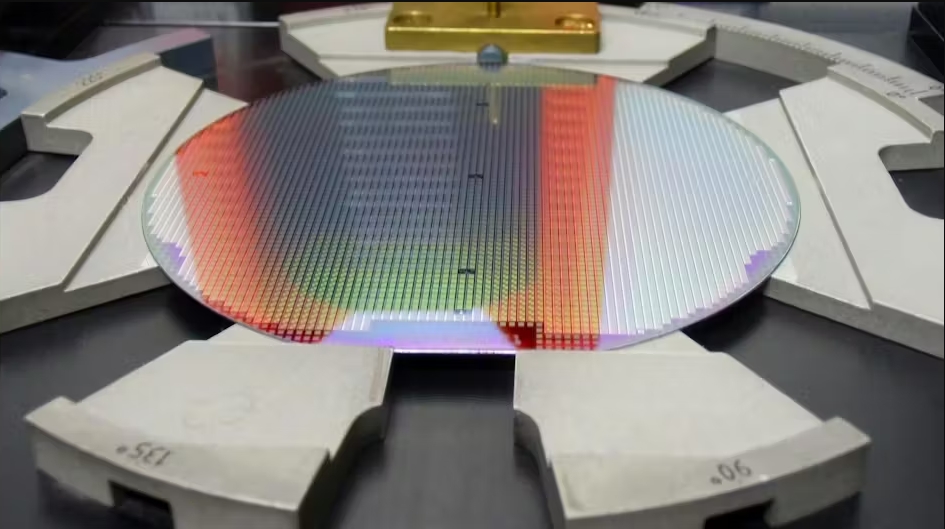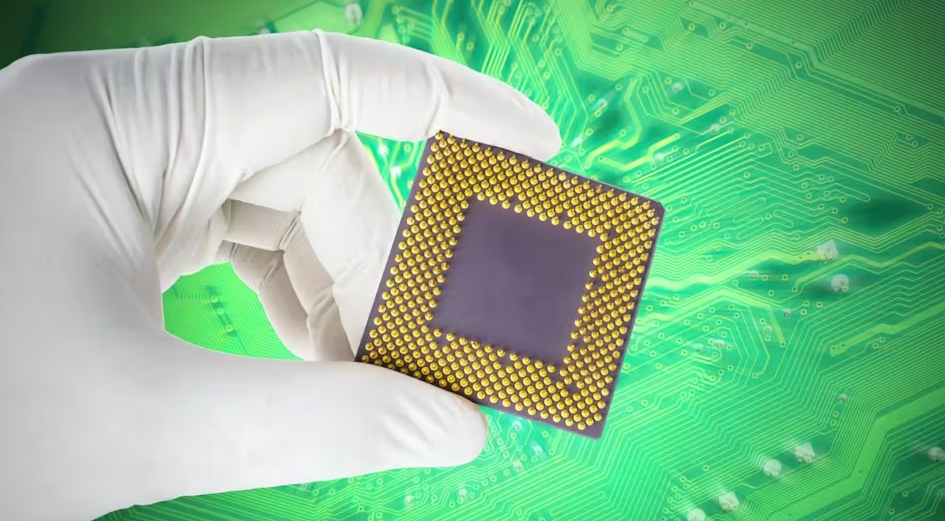The proliferation of Internet of Things (IoT) devices continues to accelerate and inspire the design of innovative end products. However, designers must remember that no matter how much creativity and effort goes into the hardware and software, the antenna plays a pivotal role. If the antenna does not work right, product performance is severely compromised.
As the interface between the device and the wireless network, the antenna is a critical part of the IoT device design process. It converts electrical energy to an electromagnetic radio-frequency (RF) wave at the transmitter and converts an incoming RF signal to electrical energy at the receiver. Designers can optimize the performance of an application by selecting an antenna that meets key engineering parameters. However, the many available options and considerations can lead to delayed and costly design cycles.
This article summarizes the role of an antenna in a wireless IoT device and briefly describes the critical design criteria influencing its selection. The article then uses example antennas from Amphenol to illustrate suitable choices for a Bluetooth Low Energy (LE) or Wi-Fi sensor, an IoT asset tracker with GNSS satellite positioning capability, a Wi-Fi access point (AP), and a LoRa IoT device.Interpreting the datasheet
An antenna’s final performance is subject to engineering decisions such as mounting position and the design of impedance matching networks. A good implementation requires a careful review of the antenna’s datasheet. Key parameters include:
Radiation pattern: This graphically defines how the antenna radiates (or absorbs) radio energy in 3D space (Figure 1).
Maximum power transfer: Good power transfer between the antenna and receiver occurs when the transmission line impedance (Z0) is matched to that of the antenna (Za). Poor impedance matching increases return loss (RL). The voltage standing wave ratio (VSWR) indicates the impedance matching between the transmission line and the antenna (Table 1). High VSWR values result in high power losses. A VSWR below 2 is generally acceptable for an IoT product.
Frequency response: Return Loss (RL) depends on the radio frequency. Designers should check the datasheet for the antenna’s frequency response to ensure RL is minimized at the intended operating frequency (Figure 2).
Directivity: This measures the directional nature of the antenna’s radiation pattern. Maximum directivity is defined as Dmax.
Efficiency (η): The ratio of total radiated power (TRP, or Prad) to input power (Pin) is calculated from the formula η = (Prad/Pin) * 100%.
Gain: This describes how much power is transmitted in the direction of peak radiation. It is usually referenced to an isotropic antenna with a designation of dBi. It is calculated from the formula Gainmax = η * Dmax.

Figure 1: Radiation patterns graphically represent how the antenna radiates or absorbs radio energy in 3D space. Datasheets typically show the maximum extent in the XY and YZ planes when the antenna is mounted as intended. (Image source: Amphenol)
Boosting performance
An antenna with poor performance restricts how much electrical power is transformed into radiated energy at the transmitter and how much energy is harvested from incoming RF signals at the receiver. Poor performance at either end reduces the wireless link’s range.
The primary factor affecting the antenna’s performance is impedance. A significant mismatch between the antenna’s impedance (which is related to voltage and current at its input) and the impedance of the voltage source driving the antenna results in poor energy transfer.
A well-designed impedance matching circuit minimizes the VSWR and subsequent power losses by matching the impedance of the transmitter power sources with that of the antenna. The impedance is typically 50 ohms (Ω) for a low-power IoT product.
The antenna’s position also dramatically influences the end product’s transmit power and receive sensitivity. For an internal antenna, design guidelines recommend placement at the top of the IoT device on the printed circuit (pc) board edge and as far as possible from other components that could generate electromagnetic interference (EMI) during operation. Impedance matching components are an exception, as these are proximal to the antenna by necessity. The pc board pads and traces connecting the antenna to the rest of the circuitry should be the only copper conductors in a defined clearance area (Figure 3).
Figure 3: A pc board-mounted antenna should be placed close to the pc board edge. The antenna should also be placed away from other components (apart from those used for the impedance matching circuit) by incorporating a clearance area. (Image source: Amphenol)
Antenna types
Specifying the antenna is a critical part of the IoT device design process. The antenna should be optimized for the target wireless interface’s RF band, for example, NB-IoT for multiple bands between 450 megahertz (MHz) and 2200 MHz, LoRa for 902 to 928 MHz in North America, Wi-Fi for 2.4 gigahertz (GHz) and 5 GHz, and Bluetooth LE for 2.4 GHz.
Antennas employ different electrical concepts. Examples are monopole, dipole, loop, inverted F antenna (IFA), and planar inverted-F antenna (PIFA). Each suits a particular application.
There are also single-ended and differential antennas. The single-ended type is unbalanced, while differential antennas are balanced. Single-ended antennas receive or transmit a signal referenced to ground, and the characteristic input impedance is typically 50 Ω. However, because many RF ICs have differential RF ports, a transformation network is often required if a single-ended antenna is employed. This balun network transforms the signal from balanced to unbalanced.
A differential antenna transmits using two complementary signals, each in its own conductor. Because the antenna is balanced, no balun is required when the antenna is used with RF ICs with differential RF ports.
Finally, antennas come in several form factors, such as pc board, chip or patch, external whip, and wire. Figure 4 illustrates some sample applications.

Figure 4: Different antennas are available to suit various IoT applications. (Image source: Amphenol)
Matching the antenna to the application
The application and product form factor determine the final choice of antenna. For example, if an IoT product is space-constrained, a pc board antenna can be incorporated directly into the pc board circuitry. These antennas are an excellent choice for 2.4 GHz applications such as Bluetooth LE or Wi-Fi sensors in smart home devices, including lighting, thermostats, and security systems. They offer reliable RF performance in a low-profile architecture. Still, pc board antennas are tricky to design. An alternative is to source the pc board antenna from a commercial vendor. It can then be attached to the pc board using an adhesive backing.
An example of a pc board antenna is Amphenol’s ST0224-10-401-A Wi-Fi pc board trace RF antenna. The antenna offers an omnidirectional radiation pattern in the 2.4 to 2.5 GHz and 5.15 to 5.85 GHz bands. The antenna measures 30 x 10 x 0.2 millimeters (mm) and has an impedance of 50 Ω. Its RL is less than -10 decibels (dB) for both frequency ranges, and its peak gain is 2.1 dB relative to isotropic (dBi) in the 2.4 GHz band and 3.1 dBi in the 5 GHz band. Its efficiency is 77 and 71%, respectively (Figure 5).

Figure 5: The ST0224-10-401-A Wi-Fi pc board trace antenna is efficient in both the 2.4 and 5 GHz bands. (Image source: Amphenol)Another option for space-constrained IoT products is a chip antenna. Automated equipment can directly mount this compact component on a pc board. The antenna suits wireless IoT applications based on Bluetooth LE or Wi-Fi. The key advantages of a chip antenna are space savings, reduced manufacturing costs, and a simplified design process.
As described above, the performance of a chip antenna is influenced by factors such as pc board layout and surrounding components, but advances in antenna technology have resulted in highly efficient devices. Chip antennas suit various applications, from smartphones and tablets to smart home systems and industrial sensors.
An example is Amphenol’s ST0147-00-011-A, a 2.4 GHz pc board surface mount chip antenna. The antenna offers an omnidirectional radiation pattern in the 2.4 to 2.5 GHz frequency band (Figure 6). The antenna measures 3.05 x 1.6 x 0.55 mm and has an impedance of 50 Ω. Its RL is less than -7 dB, its peak gain is 3.7 dBi, and its average efficiency is 80%.

Figure 6: The ST0147-00-011-A surface mount chip antenna is compact and exhibits an omnidirectional radiation pattern in the XY plane. (Image source: Amphenol)
Like pc board antennas, patch antennas are compact and can be directly attached to the pc board. A typical application is an antenna for an asset tracker or other devices with Global Navigation Satellite System (GNSS) capability. GNSS patch antennas comprise a patch element on a dielectric substrate. High efficiency ensures the antenna picks up weak GNSS signals from multiple satellites.
An example is Amphenol’s ST0543-00-N04-U passive GNSS patch antenna for operation in the 1.575 and 1.602 GHz frequency bands. The antenna measures 18 x 18 x 4 mm and has an impedance of 50 Ω. Its RL is less than -10 dB for both frequency ranges, and its peak gain is -0.5 dBi in the 1.575 GHz band and 1.0 dBi in the 1.602 GHz band. Its efficiency is 80 and 82%, respectively.
External whip antennas, such as the antenna on a Wi-Fi AP, are mounted outside of IoT devices to optimize radio operation. An external whip antenna extends signal range, improves signal quality, and overcomes obstacles or interference. They are useful in environments with weak or obstructed signals, such as those attenuated by walls, ceilings, and furniture in the home. Straight and swivel whip designs, each with standard RF interface connections such as SMA, RP-SMA, and N-Type, are available.
An example is Amphenol’s ST0226-30-002-A 2.4 and 5 GHz SMA RF stick antenna. The antenna is a good solution for Wi-Fi APs and set-top boxes (STBs). It offers an omnidirectional radiation pattern in the 2.4 to 2.5 GHz and 5.15 to 5.85 GHz frequency bands. The antenna measures 88 x 7.9 mm in diameter and has an impedance of 50 Ω. Its RL is less than -10 dB for both frequency ranges, and its peak gain is 3.0 dBi in the 2.4 GHz band and 3.4 dBi in the 5 GHz band. Its efficiency is 86 and 75%, respectively. The antenna is available with either an SMA or RP-SMA plug connector (Figure 7).

Figure 7: The ST0226-30-002-A external whip antenna for Wi-Fi APs is available with either an SMA or RP-SMA plug connector. (Image source: Amphenol)
Helical wire antennas are an inexpensive and simple option for sub-GHz applications such as LoRa IoT devices operating in the 868 MHz frequency band. The antennas are typically soldered directly to the pc board and offer good performance. Some downsides are bulkiness, particularly when operating at low frequencies, and relatively low efficiency compared with some antenna alternatives.
An example is Amphenol’s ST0686-10-N01-U 862 MHz RF antenna (Figure 8). This helical wire antenna operates in the 862 to 874 MHz frequency band and has an impedance of 50 Ω. The antenna features through-hole solder mounting with a maximum height of 38.8 mm. It has an RL less than -9.5 dB, a peak gain of 2.5 dBi, and an average efficiency of 58%.

Figure 8: The ST0686-10-N01-U helical wire antenna is a good option for LoRa IoT applications. (Image source: Amphenol)
Conclusion
Wireless IoT device radio performance depends on antenna selection, so designers must choose carefully from a wide range of antenna designs from suppliers such as Amphenol to best match the application. Datasheets are critical during selection, but following established design guidelines ensures the best wireless performance.



